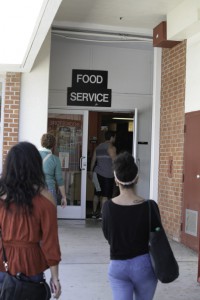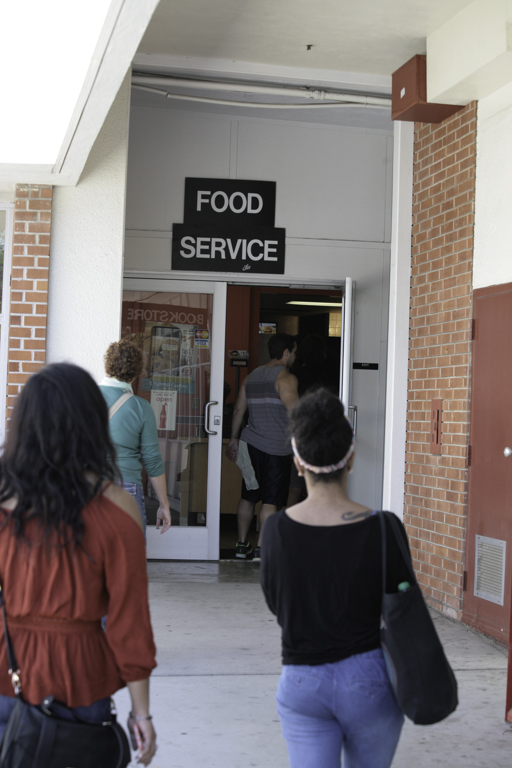Two students have complained to administrators that there is a handicap accessibility problem at Palomar College and they are not getting the proper response.
On Sept. 19, in the cafeteria where students purchase their meals, Shovan Vatandoust, 27, a student at Palomar, said he was unable to enter the cafeteria to purchase food.
Vatandoust has cerebral palsy and has to use an electric wheelchair, which makes it difficult for him to do certain things like opening doors.
According to Vatandoust, he couldn’t open the door because there were no handicap accessible doors to the cafeteria, and he had to wait two or three minutes in the heat before someone opened the door.

A friend of Vatandoust, Sid Matlock, 36, president of the Child Development Club, said he was shocked when he saw Vatandoust kicking at the door trying to get in and went out to see for himself if there was a handicap accessible door.
Matlock said he found that there weren’t any to the cafeteria or to the two restrooms in the Student Union Building.
In response, Matlock emailed Ron Haines, the director of the Disability Resource Center, and was told that Vatandoust would have to file a complaint to have the school address the problem.
Matlock said he was not happy with that answer.
“Why does (Vatandoust) have to say anything?” Matlock said. “The point is that it is not handicap accessible, period. As a person, or a human being, if anyone speaks about it, that should be enough.
“I’m not looking to cause an uproar (and) I’m not looking for a big protest,” he added. “I’m looking in doing what’s right.”
Haines said when enforcing policies, like the Americans with Disabilities Act, there is an emphasis on including the person with the disability to empower the student, and that jumping in and taking care of a student with a disability could be seen as offensive.
Haines added that his priority of making the campus more handicap accessible is based on request.
“You have to prioritize, and if someone makes a request then something can happen,” Haines said. “If they do not make a request then it is put on a lesser priority.”
Vatandoust stated that he will go straight to the source if the problem isn’t solved, and that he doesn’t think it is right that he has to wait outside for someone to open the door for him.
Image Sources
- Wheelchair Access 2014: Erika Shasky/The Telescope | All Rights Reserved

